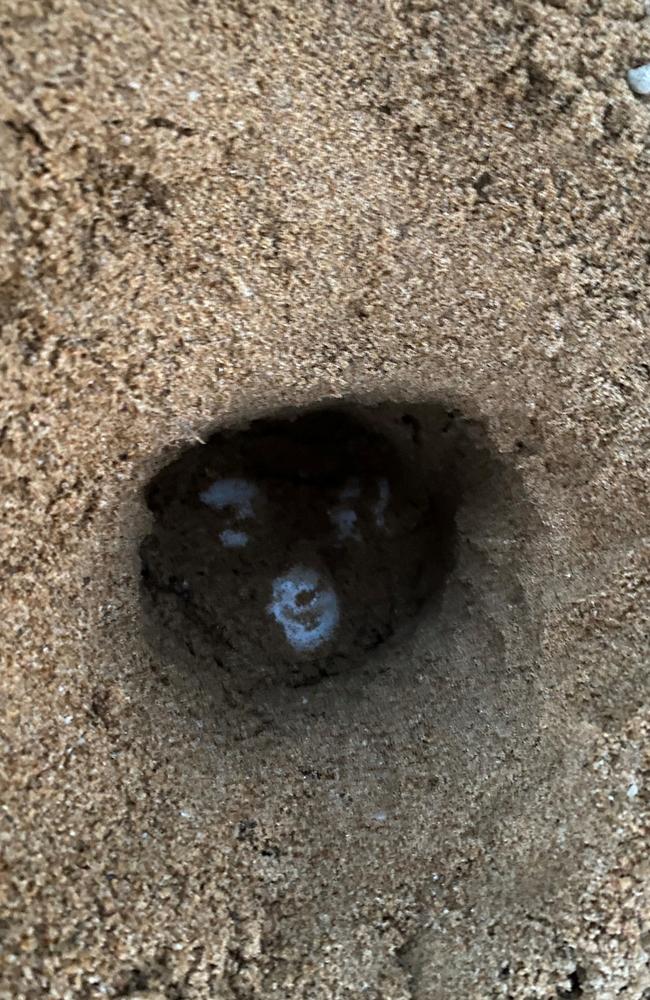Planning ahead, bunkering down, and moving to safety: Lessons from turtles
Turtle rangers have noticed record numbers of sea turtles nesting along Qld’s central coast this season, so we asked experts: What can turtles teach us about storms?

Rangers at Mon Repos turtle conservation centre have observed unusual behaviour in nesting turtles, as they migrate to nest weeks earlier than usual and are turning out in record numbers.
Queensland is coming into summer on the back of the hottest spring in 100 years, and along with it the usual mix of wild weather, from discrete storm cells bringing damaging winds, loaded with heavy rain and sometimes hail, to broader bands bringing widespread rainfall.
As the top half of the state comes into the wet season, and the southern half moves into summer, this prompted us to ask: Do turtles know something about storm seasons we don’t?

Each year from late October to January, female loggerhead turtles start nesting around Mon Repos, favouring the darkness along the coastline of Bundaberg and the sheltered headland.
Ranger-in-charge Cathy Gatley said most years they see around 70 individual turtles nesting along the shoreline, with numbers peaking in the last two weeks of December.
This year they have witnessed almost 300 nesting turtles, a 14-year record since they observed 450 turtles in 2010, she said.
Whether or not the turtles are simply nesting earlier due to the warmer temperatures or they can sense a foreboding storm season it is not yet known, as the nesting season is only a week out from its peak, she said.
“We might be looking at this season having really good nesting numbers, or it might be that the nesting turtles have started early and will stop early,” she said.

“It usually takes cyclonic conditions to stop turtles coming ashore.”
During rough conditions, to keep safe, the turtles tend to go a little offshore into the deeper channels of the Burnett River and sit at the bottom, she said.
Nesting turtles have the ability to hold onto their eggs for a given time, and will usually come to shore a few nights in a row until they find the best spot, she said.
Six to eight weeks later, tiny little hatchlings appear when they sense the sand temperature cooling, and they make their way down to the water, get carried off in the East Australian Current, where they embark on an open-ocean-phase journey to the South American coastline to return to their Australian feeding areas after 15 years.

One of the biggest threats to the endangered loggerhead turtle is beach erosion due to storms, and Ms Gatley said rangers are often kept busy, with a 2-hour window of safely moving nests, preventing them being destroyed from an impending storm eroding the banks.
Planning ahead, bunkering down, and moving to safety are all key parts of a good storm plan – something that we can learn from turtles and their conservationists.

But a warmer spring ocean doesn’t just affect sea turtle nesting habits.
BOM senior meteorologist Angus Hines said the southern coast of Queensland had been recording sea surface temperatures of 1C -1.5C above average.
These warmer temperatures affect the weather quite significantly, he said.
A sea surface only one degree warmer leads to more evaporation, more moisture in the air and increased humidity “which is a key thing required for thunderstorms to develop, potentially making it rain that much harder,” he said.

Broadly speaking, for the eastern part of the state, storm activity looks to subside between Friday to Sunday, before drying up towards the end of the month, he said.
For specific Christmas Day weather, he said, check back from December 18.
Long-range weather forecasts into January and March for the whole of Australia predict a predominantly wet summer with warmer than average days and unusually high night time temperature.
Severe weather plans can be found at Get Ready Queensland for yourself, pets and livestock and include:
- Emergency contact list
- Required medicines
- First Aid Kit
- Evacuation plan
- Emergency kit with food, water and torches
More Coverage
Originally published as Planning ahead, bunkering down, and moving to safety: Lessons from turtles




